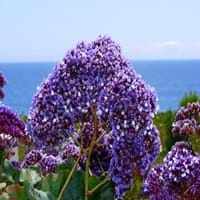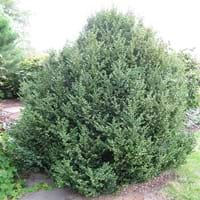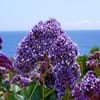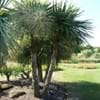Life Span
Perennial
Perennial
Type
Shrub
Broadleaf Evergreen
Origin
Hybrid origin
Hybrid origin
Types
Ceanothus thyrsiflorus, Ceanothus maritimus
Not Available
Habitat
Hillside, Open Forest
hedge rows, Shady Edge, Woodland Garden Dappled Shade
USDA Hardiness Zone
7-11
6-9
AHS Heat Zone
10-3
Not Available
Sunset Zone
1a, 1b, 2a, 2b, 3a, 3b, 4, 5, 6, 7, 8, 9, 14, 15, 16, 17, 18, 19, 20, 21, 22, 23, 24
21,22
Habit
Arching/Fountain-shaped
Pyramidal
Flower Color
Blue
Light Yellow
Flower Color Modifier
Not Available
Bicolor
Fruit Color
Not Available
Not Available
Leaf Color in Spring
Green
Green, Dark Green
Leaf Color in Summer
Green
Dark Green
Leaf Color in Fall
Green
Dark Green
Leaf Color in Winter
Green
Dark Green
Leaf Shape
Arrowhead
Pinnate
Plant Season
Spring
Spring, Summer, Fall, Winter
Sunlight
Full Sun, Partial Sun
Full Sun, Partial Sun
Type of Soil
Clay, Loam, Sand
Loam, Sand
The pH of Soil
Acidic, Neutral
Acidic, Neutral
Soil Drainage
Well drained
Well drained
Tolerances
Drought
Pollution
Where to Plant?
Ground
Container, Ground, Pot
How to Plant?
Seedlings, Stem Planting, Transplanting
Root Division, Stem Cutting
Plant Maintenance
Medium
Medium
Watering Requirements
Never Over-water, Requires watering in the growing season
Needs more water during establishment, Never Over-water, occasional watering once established
In Summer
Lots of watering
Lots of watering
In Spring
Moderate
Moderate
In Winter
Average Water
Average Water
Soil pH
Acidic, Neutral
Acidic, Neutral
Soil Type
Clay, Loam, Sand
Loam, Sand
Soil Drainage Capacity
Well drained
Well drained
Sun Exposure
Full Sun, Partial Sun
Full Sun, Partial Sun
Pruning
Prune if you want to improve plant shape, Prune to control growth, Remove damaged leaves, Remove dead leaves
Prune ocassionally, Remove branches, Remove branches that rub together, Remove crossing or rubbing branches, Remove damaged leaves, Remove dead branches, Remove dead leaves, Remove dead or diseased plant parts
Fertilizers
All-Purpose Liquid Fertilizer
All-Purpose Liquid Fertilizer, Fertilize in early to mid-summer
Pests and Diseases
Red blotch
Red blotch
Plant Tolerance
Drought
Pollution
Flower Petal Number
Single
Single
Foliage Texture
Medium
Fine
Foliage Sheen
Glossy
Glossy
Attracts
Butterflies
Bees, Birds
Aesthetic Uses
Beautification, Landscape Designing, Showy Purposes, Used for decorating walls, fences, gates, hedges, etc.
Used for making hedges
Beauty Benefits
Not Available
Not Available
Environmental Uses
Air purification
Air purification
Medicinal Uses
Not Available
Alterative, Antirheumatic, Arthritis, cathartic, Cholagogue, Detoxification, Diaphoretic, Febrifuge, HIV/AIDS, Homeopathy, Immunity, Odontalgic, Sedative, Tonic, Vermifuge
Part of Plant Used
Leaves
Flowers, Leaves, Wood
Other Uses
Can be made into a herbal tea
Used as a dye, Used for woodware
Used As Indoor Plant
No
Yes
Used As Outdoor Plant
Yes
Yes
Garden Design
Feature Plant, Hedges, Rock Garden, Wall, Screening, Wind Break, Topiary, Bonsai, Espalier
Container, Edging, Feature Plant, Foundation, Hedges, Mixed Border
Botanical Name
CEANOTHUS 'Cascade'
BUXUS 'Green Mountain' COPF
Common Name
California Lilac
Boxwood, Green Mountain Boxwood
In Hindi
कैलिफोर्निया बकाइन
Buxus Green Mountain Tree
In German
Kalifornien Lilac
Buxus Green Mountain Baum
In French
Californie Lilas
Buxus Green Tree Montagne
In Spanish
California lila
Buxus árbol verde de la montaña
In Greek
Καλιφόρνια Λιλά
Buxus Green Mountain Tree
In Portuguese
California Lilac
Buxus Árvore verde da montanha
In Polish
Kalifornia Lilac
Buxus Green Mountain Drzewo
In Latin
California Lilac
Buxus Viridis ligno
Phylum
Chlorophyta
Magnoliophyta
Class
Magnoliopsida
Magnoliopsida
Order
Rosales
Euphorbiales
Family
Rhamnaceae
Buxaceae
Clade
Angiosperms, Eudicots, Rosids
Angiosperms, Eudicots
Tribe
Not Available
Not Available
Subfamily
Not Available
Not Available
Season and Care of California Lilac and Buxus Green Mountain
Season and care of California Lilac and Buxus Green Mountain is important to know. While considering everything about California Lilac and Buxus Green Mountain Care, growing season is an essential factor. California Lilac season is Spring and Buxus Green Mountain season is Spring. The type of soil for California Lilac is Clay, Loam, Sand and for Buxus Green Mountain is Loam, Sand while the PH of soil for California Lilac is Acidic, Neutral and for Buxus Green Mountain is Acidic, Neutral.
California Lilac and Buxus Green Mountain Physical Information
California Lilac and Buxus Green Mountain physical information is very important for comparison. California Lilac height is 180.00 cm and width 180.00 cm whereas Buxus Green Mountain height is 152.40 cm and width 91.44 cm. The color specification of California Lilac and Buxus Green Mountain are as follows:
California Lilac flower color: Blue
California Lilac leaf color: Green
Buxus Green Mountain flower color: Light Yellow
- Buxus Green Mountain leaf color: Green and Dark Green
Care of California Lilac and Buxus Green Mountain
Care of California Lilac and Buxus Green Mountain include pruning, fertilizers, watering etc. California Lilac pruning is done Prune if you want to improve plant shape, Prune to control growth, Remove damaged leaves and Remove dead leaves and Buxus Green Mountain pruning is done Prune ocassionally, Remove branches, Remove branches that rub together, Remove crossing or rubbing branches, Remove damaged leaves, Remove dead branches, Remove dead leaves and Remove dead or diseased plant parts. In summer California Lilac needs Lots of watering and in winter, it needs Average Water. Whereas, in summer Buxus Green Mountain needs Lots of watering and in winter, it needs Average Water.





